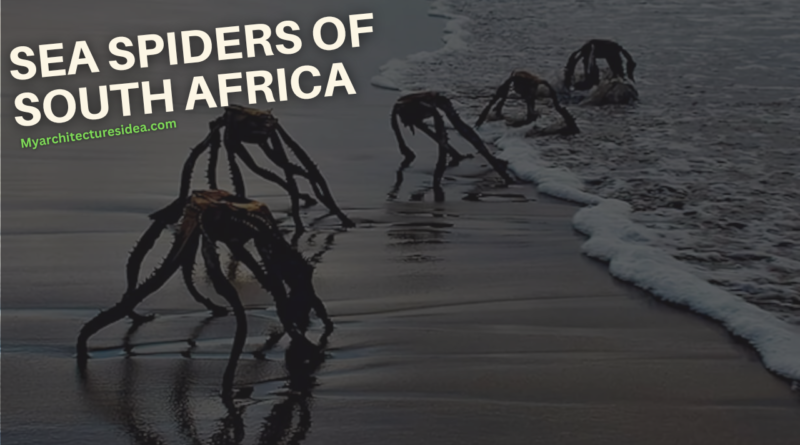An Insider’s View: Sea Spiders of South Africa
Are you fond of Sea spiders or just want to know more about them? In both cases, you are at the right place. To me they look very scary indeed. Sea spiders, or pycnogonids, exist in every ocean corner. Mite and tick cousins, they appear unique with their thin, long legs and bodies often spine-trimmed. Most of them stay small, from tiny millimeters to a few centimeters. Yet, the biggest sea spider can stretch over 30 centimeters in leg span.
Sea Spiders South Africa
Sea spiders prefer various ocean home styles, from shallow coastal waters to the deep sea mysteries. Cold water zones like the Arctic and Antarctic are their favorites. However, in South Africa, they settle in diverse habitats: rocky shores, kelp forests, even around coral reefs.
The Birds and the Bees: Sea Spider Edition
Sea spiders do the mating game. Unlike some creatures, males and females pair up for this. The male transports his sperm to the female using a specific organ, the penis. Then, she fertilizes her eggs and takes care of them till they hatch. Sea spider babies are therefore known as planktonic. This means they float freely till they settle down, transform and grow into mature sea spiders.
South African Sea Spiders
Did you know that out of 1,300 types of sea spiders identified by scientists, roughly 100 make South Africa their home? Some common ones that you may bump into, include:
- Pycnogonum (Nulloviger) africanum
- Pycnogonum angulirostrum
- Pycnogonum cataphractum
- Pycnogonum crassirostrum
- Pycnogonum forte
These aquatic spiders thrive in diverse environments along the South African coast like rocky areas, forests of kelp, and reefs made of coral.
Sea spiders chomp on tiny water animals, balancing marine life. Fish, seabirds, and ocean mammals also dine on them. They’re important for a healthy water world.
They’re predators, sea spiders. They snack on small marine beings, like cnidarians – think jellyfish and anemones- plus bryozoans and other tiny creatures. Long legs snatch their prey, then they suck it dry with their snout-like organ, the proboscis.
Protection of Sea Spiders
Though sea spiders aren’t in danger of disappearing right now, they still face threats. Habitat destruction, pollution, and overfishing all harm sea spiders. Let’s work to keep these water spiders and their homes safe!
Conclusion
Sea spiders, captivating critters vital to marine eco-health, are plentiful in South Africa’s diverse coastlines. Spotting a sea spider calls for a pause! Marvel at its exotic looks and its critical role in marine life.
Also Read:




